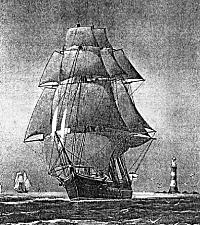Location
On the main walk through Victoria Park.
Description
Cement base, granite plinth, truncated pyramidal column on similar base.

HMS Active

Armament: Designed to carry six 7-inch MLR guns and four 6-inch MLR guns. After 1880 fitted with ten 6-inch BL guns, two 6-inch guns and two 14-inch torpedo tubes.
Builder: Thames Shipbuilding Company, Blackwall.
Type: Corvette
Launched: 1869 Length: 270ft
Displacement: 3080 tons
Horsepower: 4015 Indicated Horsepower
Speed: 15 knots; 12½ knots under canvas
Scrapped: Sold 1906
IS ERECTED BY THE
OFFICERS
AND SHIP'S COMPANY OF
H.M.S.ACTIVE
LATE FLAG SHIP
ON THE WEST COAST OF AFRICA
AND CAPE OF GOOD HOPE STATION
TO PERPETUATE THE MEMORY
OF THOSE OF THEIR SHIPMATES
WHO PERISHED WHILE GALLANTLY
DOING THEIR DUTY WITH
THE NAVAL BRIGADE OF THAT SHIP
DURING THE KAFIR WAR 1877-8
AND THE ZULU WAR OF 1879.
Inscription (Left)
|
L.C.COKER Midshipman J.RADFORD Leading Seaman J. MOORE Shoemaker A.SMITH Able Seaman W.STAGG Private R.M. W.AYNSLEY Signalman |
FORT EKOWE ' ' ' ' ' ' ' ' ISANDLWANA |
Inscription (Back)
Inscription (Right)
|
A.PEARCE Coxn Cutter D.MARTIN Able Seaman W.SEDDON Gr R.M.A. G.WALSH Ordinary Seaman T.LIVERPOOL Krooman F.DAFFEY Signalman A.MABEY Drummer R.M. |
LOWER TUGELA ' ' ' ' ' ' ' ' TRANSKEI ' ' |
Further Information
A sister ship to Volage, Active was constructed of iron with an outer skin of oak and having copper sheathing below the waterline. Her design derived from that of Inconstant, with speed as a primary consideration. She did not enter service until 1873 when she went as the commodore's ship on the Cape of Good Hope and West African station.
In November 1878 the Commander of the Cape of Good Hope Squadron was asked to send a Naval Brigade to support Lord Chelmsford who with 8 British Battalions were facing 40,000 Zulus. Commander Fletcher Campbell marched the Active's Brigade north to the Tugela River where the sailors built a haul over pont which eventually ferried over 5000 men across the river. The first action was seen on 22nd January 1879 at about the same time that the British were suffering very heavy losses at Isandlwana where one of Active's Brigade, Signalman William Aynsley lost his life. It is recorded that he fought to the last with a sword bayonet and his back to a wagon wheel until speared from behind by a Zulu assegai.
Captain Fletcher Campbell of Active noted with some surprise that there was only one serious defaulter during eight months of campaigning, and he was a thirsty stoker who could not resist sampling a bottle of brandy incautiously stowed in a stores wagon.
Paid off in 1879, Active was rearmed and refitted, but had no role to play until 1885 when she was selected to be the commodore's ship in the Training Squadron. For thirteen years she led the other corvettes, Volage, Calypso and Rover, on sail-training exercises, and was readily picked out from the others because her single topsails had four bands of reef points. She is reputed to have been the last square-rigged naval ship to leave Portsmouth Harbour under sail. Relieved by Raleigh, she paid off in 1898 and went into reserve, being sold out of the service in 1906.
For the Zulu war see: www.kwazulu.co.uk
Addendum
(Supplied by John Bilcliffe)
Medal roll entries of names on the Memorial.
[Date of death, alternative name/initial/rank highlighted in bold type]
L.C. Coker, Midshipman 16 March 1879
Edwin Radford, Leading Seaman 7 March 1879
John Moore, Shoemaker 12 February 1879
Alfred Smith, Able Seaman 2 April 1879
William Stagg, Private R.M. 17. March 1879
W.H. Aynsley, Signaller 2nd. Class (22 January 1879)
Alfred Pearce, Petty Officer 2nd. Class 22 April 1879
Daniel Martin, Able Seaman 9 January 1879
William Seddon, Gunner R.M.A. 2 January 1879
G.U. Walsh, Ordinary Seaman 20 April 1879
Tom Liverpool, Krooman 3 May 1879
Frederick Daffy, Signaller Boy 3 January 1878
A.J. Maby, Bugler 13 February 1878
Deaths noted in medal roll but not included on Memorial.
William Brown, Gunner R.M.A. 1880 (precise date not known)
Jim Dough, Kroomam 2 March 1879
George King, Private R.M. 16 September 1878
Roger Sheehy, Cooper's Crew 1881 (died after monument erected)
The Monument
A contemporary report describes the monument as "an obelisk of polished Scotch grey-granite on an unpolished pedestal of the same stone. It was produced by Aberdeen sculptors"
